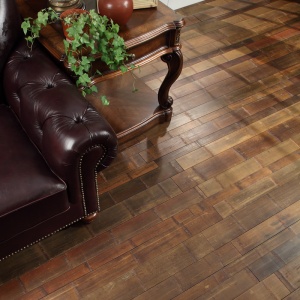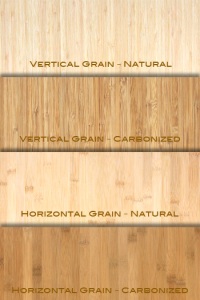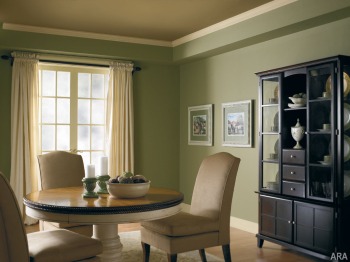It looks like bamboo might be back again in a big way. Not that it ever really left however with such a liner looks it has up until now been mostly used in contemporary and modern style homes and offices. I recently did a search on bamboo flooring to see what “new” things might be out there and amongst all my findings I saw something that really stood out… “unfurled bamboo”. My curiosity got the best of me. I clicked on a link from Dasso (http://www.dassoxtr.com) and discovered the little gem that is unfurled bamboo.
Imagine my surprise when I saw what a traditional and even vintage look “unfurled bamboo” gives. What is so amazing about bamboo is not just its characteristics but it’s renewable qualities. Most think bamboo is a wood but it is technically a grass. There are over hundreds of species of bamboo and just like with trees they all have their own interesting traits. Moso bamboo which is the vartiety most often used for floors can grow over 3′ in a day. It takes 3-5 years to fully mature and be harvested. One of the best parts about bamboo is that unlike trees when they get harvested the root system is left intake so it simply keeps growing.
Bamboo has been present in the flooring industry since the early 90’s and has grown and changed since then. A lot of the changes having to do with the addition of laminates, resins and other binding agents, styles and color. There have been 3 generations of bamboo flooring:
The first type of bamboo flooring we saw was in laminated bamboo stripes that were in the form of the round bamboo stalks. They were cut into approximately 1/4″ strips and laminated together to form the plank. These were in the natural yellow color of the bamboo but also released was a caramelized version which was actually bamboo that had been steamed. The market place also only saw 2 types: vertical grain and horizontal grain. This flooring was sold as being harder than oak but in actuality it was not and dents were noticeable.
The second type of bamboo flooring introduced was the strand woven. The stalks were still cut the same however the difference was that they were also partially shreds in order to expose the underlying bamboo fiber. Resins were prior to subjecting the bamboo to enormous amounts of pressure which resulted in a denser and hardier product. The introduction of tiger hue (a mix of the natural and caramelized shades) came about as well as giving customer’s the option of having their bamboo stained before the top coat was added.
The third (and my favorite) type of bamboo flooring introduced is current wonder that is unfurled bamboo. A company by the name of Dasso created a product called EcoSolid which is an unfurled bamboo that was created using a patented manufacturing process that “flattens” out one bamboo stalk into one piece. With this process the hardest part of the bamboo stalk (which is the outer skin) can be used for an amazing flooring surface. “The EcoSolid Forest collection boasts an impressive natural look because no lacquers, polyurethanes or waxes are used on the surface, which is the actual skin of the bamboo as it comes from nature. The Vintage collection adds another element to the EcoSolid line by incorporating rich colors into a smooth, UV-finished face.”
This is thus far my favorite and I for one can’t wait to use it in a client’s home!!
Check out Dasso’s partner for this amazing bamboo product: http://www.ecotimber.com
http://www.ecotimber.com/product-collection?skugroupid=301&title1=42&title2=Dasso.Flooring
Special thanks to Floor Trends Mag for their brilliant research and wonderful information shared about on going trends in flooring. http://www.floortrendsmag.com/articles/96805-the-continuing-evolution-in-bamboo-flooring?v=preview






